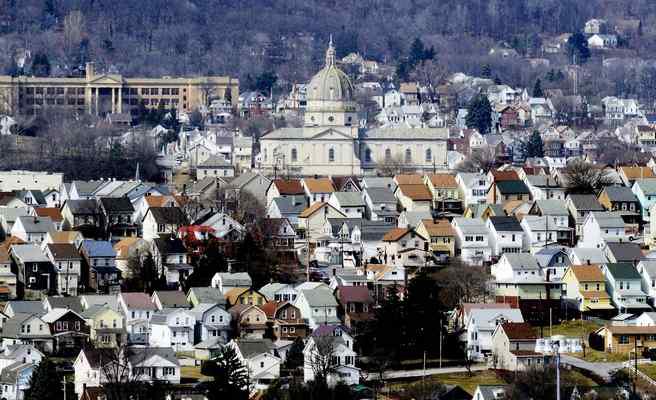|
Editorial: Church sex abuse victims search for justice
Daily Times
One week ago, “Spotlight” captured the Academy Award for Best Picture, detailing the gritty investigative journalism at the Boston Globe that blew the roof off the rampant problem of the sexual abuse of children by priests in the Boston Archdiocese. In a sad bit of irony, just two days later Pennsylvania Attorney General Kathleen Kane was shining another “spotlight” on the same problem, this time much closer to home. In a horrifying 147-page grand jury report, Kane laid out the sordid details behind decades of predator priests who preyed on children in the Altoona-Johnstown Diocese. The saga was hauntingly familiar, especially here in the Philadelphia region, and not just because of the Oscar-winning film. The grand jury report into the depravity in Altoona mimicked the findings of a grand jury report issued a decade ago detailing similar issues in the Philadelphia Archdiocese. The Altoona report cites dozens of priests abusing hundreds of innocent children over a period of nearly a half-century. Even more damning, once again the grand jury found the leaders of the archdiocese seeming more concerned with their reputation and that of the church, as opposed to the kids who were routinely being molested. If anything, the situation in Altoona is even more shocking. How rampant, how evil was what was going on among these supposed men of faith? The grand jury paints a horrifying picture of abuse so pervasive that one church official actually created what the probers referred to as a “payout chart” to suggest how much money an abuse victim would receive depending on the severity of the offense. The worse the offense, the more money the victim would receive. What they will not receive is justice. That is because the grand jury recommended no charges be filed against any of the priests named in the report. Kane made clear the probe was ongoing, but much like in Philadelphia, the obstacles to filing criminal charges against those involved are steep. Some of the priests have died, other instances are now beyond the statute of limitations for prosecution, and in still others victims remain too traumatized to testify. In Philadelphia, Monsignor William Lynn became the fall guy for policies put in place by his superiors that clearly were meant to shield the archdiocese, including moving problem priests from parish to parish without notifying parishioners. Lynn was convicted of a single charge of endangering children, in the process becoming the highest-ranking church official in the country to be convicted in connection with the priest scandal. Lynn has steadfastly maintained his innocence, and his lawyers have successfully argued that he likely should not have been charged in the first place because the law did not apply to him at the time of the actions for which he was convicted. A state appeals court has twice tossed out his conviction. It was reinstated once by the state Supreme Court. Prosecutors continue to appeal the decision to overturn the conviction. Kane suggested the press conference was an effort to give the victims some solace despite the likelihood that no one would ever be charged in connection with the abuse. “Hundreds of children today are still suffering those consequences,” Kane said. The grand jury report took direct aim at two church leaders, painting a damning picture of two Altoona bishops for their role in not reporting the abuse and stating flatly that in many cases the duo “chose to shield the institution and themselves from scandal.” Sound familiar? Bishop James Hogan died in 2005. His successor, Bishop Joseph Adamec, asserted his Fifth Amendment right and refused to answer questions from the grand jury. He released a statement calling the charges “unfounded.” The current bishop is not believed to have taken part in any of the abuses of the past, and the diocese released a statement saying it had “cooperated fully with authorities throughout the investigation.” The situation in Altoona also closely mirrored the events in Boston, showing a church so ingrained in the community that its authority – and influence – could not be questioned. One monsignor who appeared before the grand jury intimated he would pick public officials, including the mayor and chief of police. In Altoona, five priests have been removed from their duties in the past year by new leaders of the archdiocese. In Philadelphia, where three separate grand juries have tackled clergy abuse since 2003, dozens of priests have been removed. Three faced criminal charges, including Lynn. They were welcome actions, but came much too late. The church’s decades of looking the other way when it comes to problem priests undoubtedly allowed more children to be abused. And it left hundreds of families still looking for justice – and restoration of their faith. It no doubt will spark new calls for two measures the church and its allies have vigorously opposed. That would be legislation to abolish the statute of limitations to bring sex abuse charges, as well as opening a window for victims to seek civil action against the church. Groups supporting abuse victims have called for both for years. The change on the statute of limitations would seem to be a common sense move. But no one should hold their breath waiting for the window to open to allow civil redress – a move that could bankrupt some archdiocese. In too many cases, the sins of the fathers will go unpunished. And no amount of “spotlights” is likely to change that.
|
.
Any original material on these pages is copyright © BishopAccountability.org 2004. Reproduce freely with attribution.
